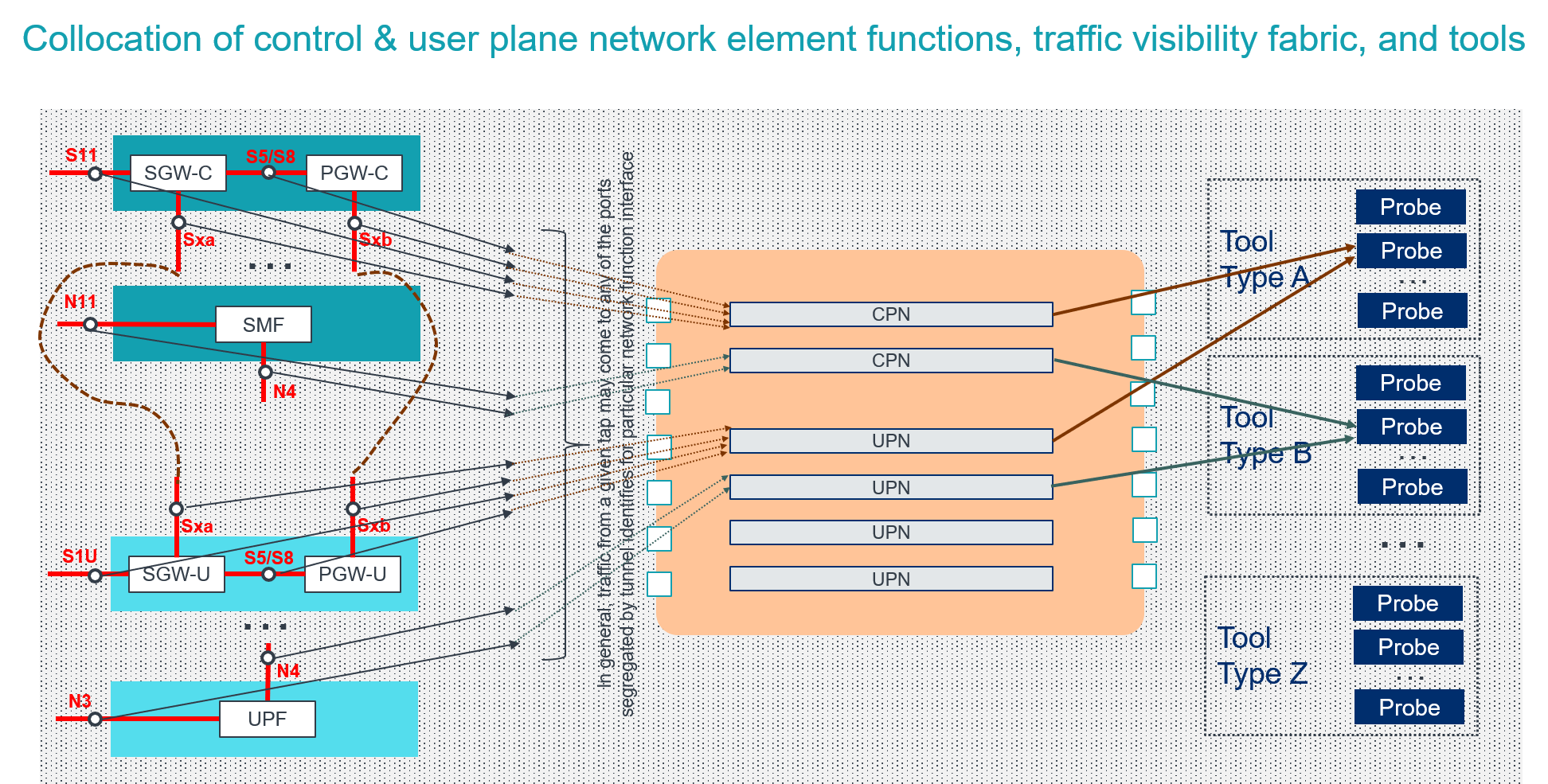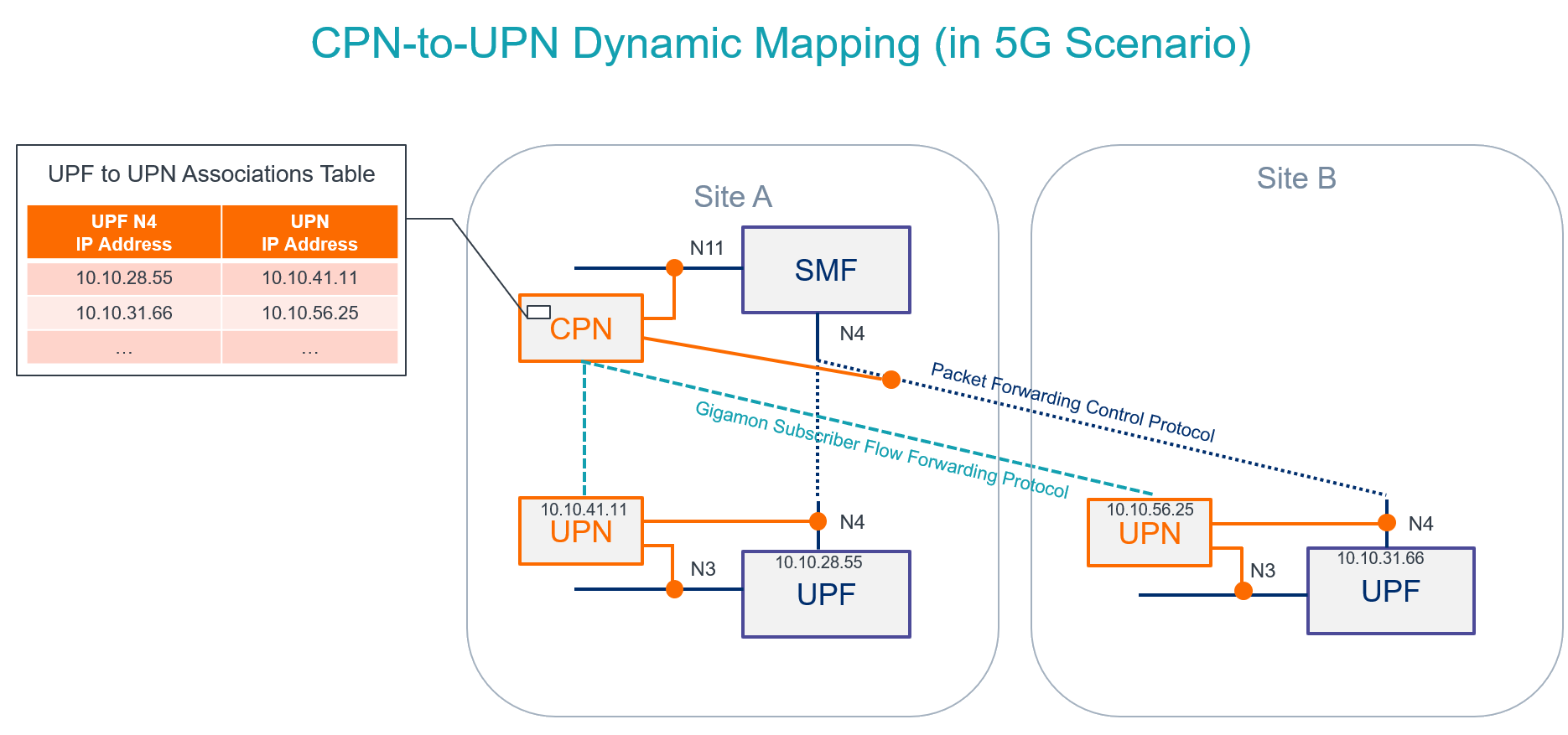CUPS Traffic Handling
CUPS is essentially the separation of the control plane and user plane network functions. Due to this, the network element functions and the Gigamon devices (or nodes) that constitute the traffic visibility and analytics fabric managed by GigaVUE‑FM, for Mobility Solutions are generally spread across multiple geographically dispersed data centers called sites.
A site is a collection of the following:
- Network element functions
- Traffic access points for interfaces of such network element functions
- Visibility and analytics fabric (VAF) nodes
- Traffic monitoring or analysis tool devices (called probes) that are locally connected without using any IP routed tunnels
The Gigamon VAF nodes supporting a given site are typically arranged into a constellation of clusters connected by inter-cluster links.
The VAF nodes are collocated with the mobility network element functions for local-to-the-site traffic interception and usually with traffic monitoring or analysis probes for local-to-the-site traffic forwarding. Network traffic visibility is accomplished by using fabric maps to guide traffic received from the access points on any network port of the constellation through any GigaSMART engine available within the constellation to any tool port or GigaStream of the constellation. The nodes collocated at the control plane sites are referred to as Control Plane Network (CPN) and the nodes collocated at the user plane sites are referred as User Plane Network (UPN).
The distributed nature of the network and the VAF leads to the challenge of synchronizing the traffic forwarding to the tools spread over multiple sites and hence synchronizing CPNs and UPNs involved in handling and forwarding sessions in a subscriber-aware manner. To manage these challenges, the Control and User plane session correlation mechanism performs the following:
- CPN/UPN Tool Forwarding Synchronization: Synchronizes the traffic forwarding to the tools across all CPNs and UPNs.
- CPN-to-UPN Dynamic Mapping: Provides an efficient way of sending CPN-established session information updates to the specific UPNs where the established User Plane traffic sessions are anticipated.
CPN-UPN Tool Forwarding Synchronization in the CUPS solution synchronizes the traffic forwarding to the tools across all CPNs and UPNs. The following diagram illustrates collocation of Control Plane Network element functions, User Plane Network element functions, and the VAF nodes for Multi-Cluster Visibility Fabrics.

| 1 | Traffic Correlation for LTE and 5G CUPS |
The control plane and user plane functions communicate through logical interfaces, such as SGW-C and SGW-U through Sxa, PGW-C to PGW-U through Sxb, and SMF and UPF through N4. These interfaces are either local (between functions in the same site) or remote (between functions in two different site). Similarly, Gigamon VAF CPNs can be connected to UPNs through seperate IP transport connections called the Gigamon Subscriber Flow Forwarding Protocol or SFFP, which are also either local or remote.
All traffic streams of a given LTE session get correlated by a certain pair of CPN and UPN pairsand directed to the same probe (as indicated by the brown arrows in the Figure Traffic Correlation for LTE and 5G CUPS). All traffic streams of a given 5G session also get correlated by another CPN and UPN pairs and directed to the same probe (as indicated by the grey arrows in the Figure Traffic Correlation for LTE and 5G CUPS).
CPN-UPN Dynamic Mapping in 5G CUPS Correlation, conveyed using SFFP, provides an efficient way of sending CPN established session information updates to the specific UPNs where the established User Plane sessions are anticipated. The following diagram shows the CPN-to-UPN Dynamic Mapping:

| 2 | Dynamic CPN-to-UPN Mapping for 5G CUPS |



